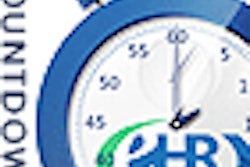
More U.S. dentists are incorporating electronic dental records (EDRs) into their practices, creating new opportunities to utilize EDR data in evidence-based research projects, according to a new study in the Journal of the American Dental Association (January 1, 2013, Vol. 144:1, pp. 49-58).
However, relatively little is known so far about what clinical patient information practitioners keep on their computers and how they utilize it.
"A key consideration in determining whether it is feasible to reuse dental patient record data for practice-based research is the type and proportion of clinical information that practitioners manage electronically," wrote the study authors, who are from multiple U.S. academic and research centers.
To address this question, they conducted a Web-based survey of 991 U.S. and Scandinavian practitioner-investigators (P-Is) in the Dental Practice-Based Research Network (DPBRN) to determine how much they use computers to manage clinical information; the type of patient information they keep on paper, on a computer, or both; and their willingness to reuse EDR data for research.
Dental Informatics
The DPBRN practices included in the survey were located in Alabama, Mississippi, Florida, Georgia, Minnesota, and Oregon, as well as in the Scandinavian countries of Denmark, Norway, and Sweden.
"We've done these studies for many years, looking at EDRs and where computing [in dentistry] is going," said lead author Titus Schleyer, DMD, PhD, associate professor and director of the Center for Dental Informatics at the University of Pittsburgh School of Dental Medicine. "So when we had the chance to do this with the DPBRN, we jumped at it. It is a really good way to get studies done at a much lower cost and effort."
The survey sent to the DPBRN practices posed a series of questions addressing whether participants used a computer to manage clinical or administrative patient data and, if not, how likely they were to do so within the next two years. Participants were also asked whether they stored information for 13 clinical information categories on paper, a computer, or both. Finally, they were asked whether they would be willing to reuse data from their EDRs for research and use electronic, rather than paper, forms to collect research data.
A total of 729 P-Is (73.6%) responded to the survey. The results were reported separately for solo private practice, group private practice, HealthPartners Dental Group, Permanente Dental Associates, and other practice types by region, according to the researchers, "because both the region and the organizational structure influence adoption of EDRs significantly."
Adoption on the rise
Overall, the findings were consistent with previous research (Journal of the American Medical Informatics Association, May/June 2006, Vol. 13:3, pp. 344-352), Dr. Schleyer noted, although there were some encouraging trends with regard to adoption of computers and EDRs in the U.S.
"Looking at the results, more than 70% of the participants have chairside computing, and 100% are likely to have a computer in their office," he said. "What was surprising was that such a high percentage had computers chairside, and even more surprising was how many are paperless."
In 2004 and 2005, the Center for Dental Informatics surveyed a national random sample of general dentists in the U.S. and found that 25% used a computer at chairside and 1.8% were completely paperless. In this new study, 74% of solo practitioners and 79% of group practitioners used a computer at chairside, and 15% managed all patient information on a computer, representing "a high penetration of clinical computing," according to the study authors.
Among U.S. participants, 30.5% of solo practitioners and 58.3% of group practitioners who reported not using a computer clinically said they were "very likely" or "somewhat likely" to start doing so within the next two years.
The survey also found that four major EDR systems are used in 71% of U.S. practices that employ computers: Dentrix (Henry Schein), Eaglesoft (Patterson), SoftDent (Carestream), and PracticeWorks (Carestream).
With regard to the distribution of patient information stored on computers and on paper, Dr. Schleyer and his co-authors found that U.S. practitioners stored appointments, treatment plans, completed treatment, and images most frequently, and periodontal charting, diagnosis, medical history, progress notes, and chief complaint least frequently. But nearly 100% of the Scandinavian practitioners stored all information electronically.
"Whether to adopt an EDR is still a practice-by-practice, very individualized discussion," Dr. Schleyer said. "But the general trend over the past few years, with the government investing in health IT, all of these things have an effect. And if you look at the computing adoption curve in the study, I think we will see a very rapid rise in adoption of EDRs in the next few years."
Reusing clinical data
The jury is still out on the question of reusing EDR data for clinical research, however.
"The response patterns regarding reusing data from EDRs and using electronic forms for research reflect uncertainty among P-Is," the researchers wrote. The fact that only 44.4% of U.S. solo and group practitioners were willing to reuse EDR data for research "could be viewed with concern," they added.
"The idea there was whether the practitioners would be willing to use the data for quality improvement and research, and judging from the survey, people weren't quite so sure about that," Dr. Schleyer said. "But it was good to see that almost 50% said they would. There is a lot of knowledge and wisdom in the data, and we need to find good ways to mine that data."
The findings of this study correspond with where medical electronic health records (EHRs) are going as well, noted Mike Uretz, executive director of the EHR Group and editor-in-chief of DentalSoftwareAdvisor.com.
"The past couple of years, EHR developers have been integrating more robust tools for the capture, aggregation, and analysis of patient visit data for purposes of research and quality improvement," he told DrBicuspid.com. "In fact, this is a long-term goal of the federal meaningful use program: to get more population patient data to analyze various clinical measures for quality improvement and ultimately improving outcomes."



















